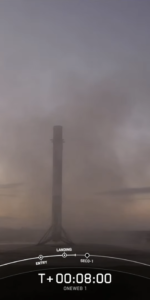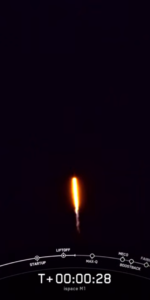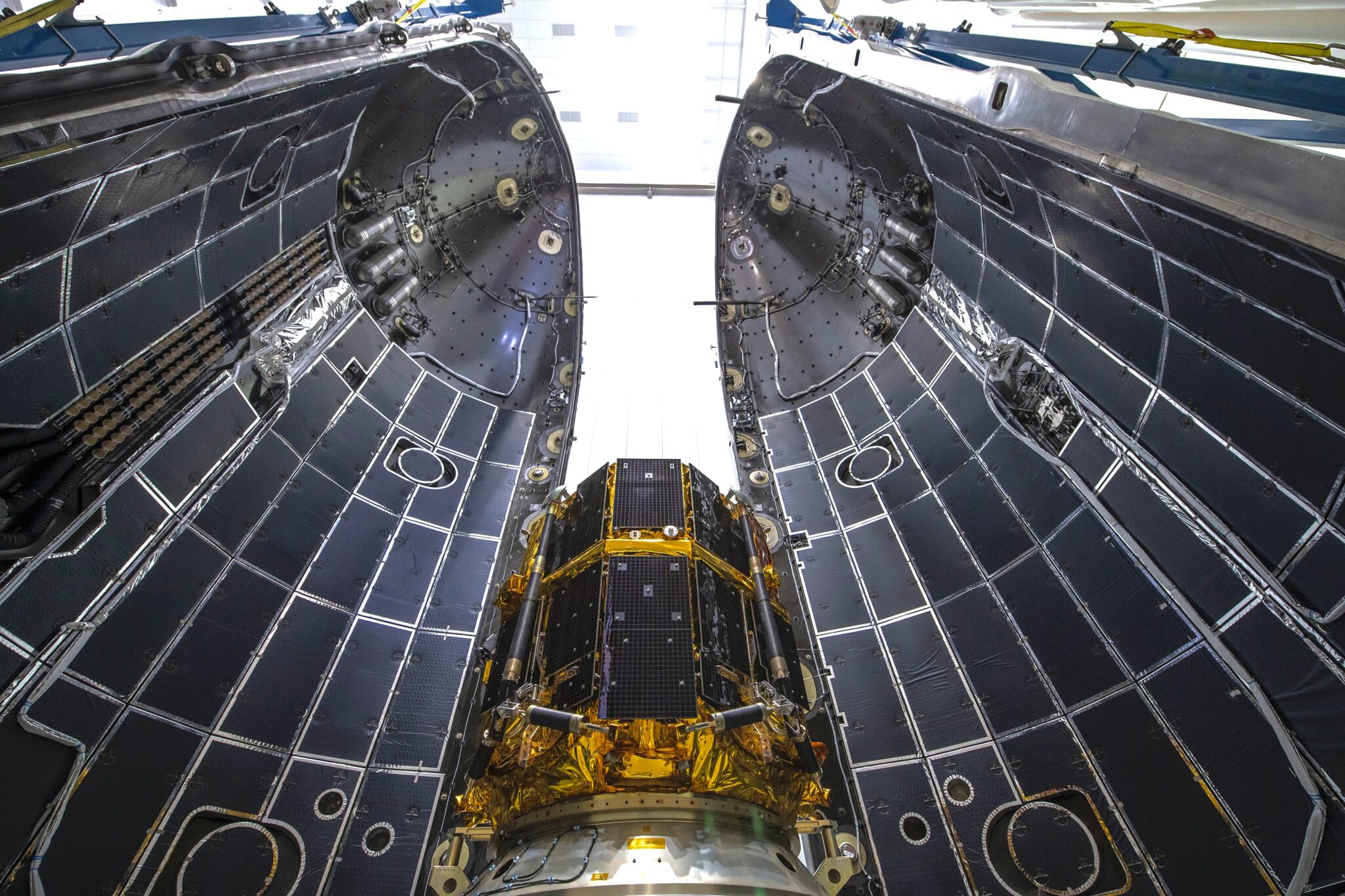
SpaceX will take aim on the Moon for the second time this year on Sunday, when a five-times-used Falcon 9 booster takes flight from storied Space Launch Complex (SLC)-40 at Cape Canaveral Space Force Station, Fla., laden with Japan’s Hakuto-R lander, the miniature Rashid rover built in the United Arab Emirates (UAE) and NASA’s water-ice-seeking Lunar Flashlight. Liftoff of the mission—delayed since the end of November, in response to a need to conduct unspecified “pre-flight vehicle checkouts”—is scheduled for 2:38 a.m. EST Sunday and the lunar-bound payloads will be set free from the Falcon 9’s second stage a little under an hour later.
Sunday’s planned pre-dawn flight will mark the second time that SpaceX has despatched a mission to the Moon, following August’s launch of “Danuri”, the Korea Pathfinder Lunar Orbiter (KPLO). It also comes only days after Japanese billionaire entrepreneur Yusaku Maezawa announced the names of eight prime and two backup crewmates to join him on the first crewed SpaceX Starship mission around the Moon.
Maezawa, who flew to the International Space Station (ISS) as a Spaceflight Participant (SFP) on Soyuz MS-20 last December, unveiled the “dearMoon” project to circumnavigate the Moon in the fall of 2018 and in March of last year announced that eight members of the public would ride along for free on the week-long voyage in 2023. Those eight crew members—three from the United States and one apiece from the Czech Republic, South Korea, India, the Republic of Ireland and the United Kingdom—were formally identified last Thursday, fifty years and one day since the last humans launched to the Moon and exactly a year to the day since Maezawa arrived aboard the ISS.

Flying the first crewed Starship sometime next year, the dearMoon crew will approach to within 125 miles (200 kilometers) of our nearest celestial neighbor, making them the first humans to do so since Apollo 17 Commander Gene Cernan, Command Module Pilot (CMP) Ron Evans and Lunar Module Pilot (LMP) Harrison “Jack” Schmitt left lunar orbit, way back in December 1972. In addition to Maezawa, the dearMoon crew includes DJ and music producer Steve Aoki, rapper TOP (Choi Seung Hyun), choreographer Yemi A.D., photographic artist Rhiannon Adam, YouTuber Tim Dodd, photographer Karim Iliya, documentary filmmaker Brendan Hall and actor Dev D. Joshi.
With an age range spanning 47-year-old Maezawa to 22-year-old Joshi, the dearMoon voyage looks set to establish new records for the oldest and youngest individuals ever to travel to lunar distance. Currently, Apollo 14’s Al Shepard and Apollo 16’s Charlie Duke hold these records, aged 47 and 36, respectively, at the time of their missions to the Moon in January 1971 and April 1972.
And by default, dearMoon will see the first nationals from outside the United States to travel to the Moon and back. A crew of nine also looks set to make dearMoon the largest number of humans ever launched aboard a single spacecraft, eclipsing the eight-strong crew of shuttle Challenger on Mission 61A in October 1985. Staying back home on Earth, and serving as backups for the dearMoon voyage, are U.S. snowboarder Kaitlyn Farrington and Japanese dancer and choreographer Miyu.
Coupled with the recent success of NASA’s Artemis I mission—an Orion Crew Module (CM) and European Service Module (ESM), launched atop the first Space Launch System (SLS) rocket from Pad 39B at Florida’s Kennedy Space Center (KSC) last month—2022 is coming to a close on a high for lunar exploration, as the likelihood of a return of humans to the Moon and boots on its dusty surface increases from a pessimistic glow to a bright, entrancing flame. When SpaceX launches its five-times-flown B1073 core from the Cape on Sunday, it will make Japan and the UAE the fourth and fifth nations after Russia, the United States and China to land a spacecraft on the Moon’s surface.
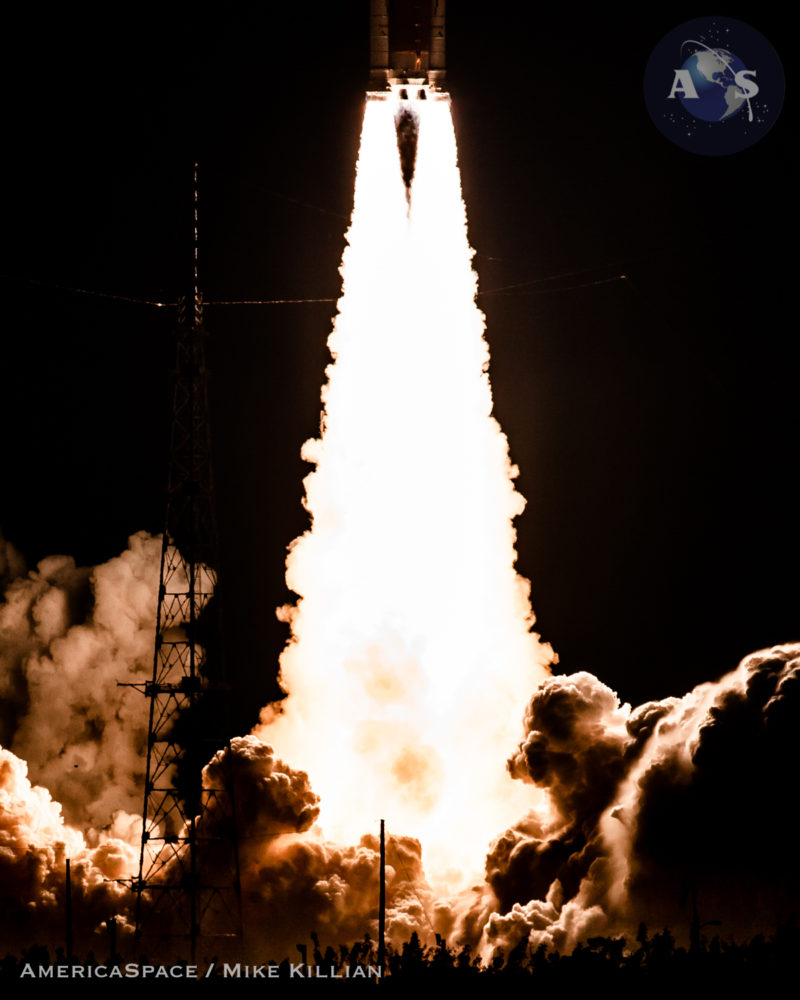
And the UAE spacecraft, named “Rashid” in honor of Dubai’s late ruler, Sheikh Rashid bin Saeed Al Maktoum (1912-1990), is a four-wheeled rover equipped with a pair of high-resolution cameras, a microscopic camera for fine and detailed imaging and a thermal imaging camera, together with a Langmuir probe to study plasmas and the characteristics of lunar dust. The rover, which weighs only 22 pounds (10 kilograms) and is about the same size as a microwave oven, will alight with Japan’s Hakuto-R (“White Rabbit”) lander in Atlas crater, southeast of Mare Frigoris (“Sea of Cold”) in the Moon’s northeastern quadrant.
Atlas sits at 47.5 degrees North and 44.4 degrees East and measures about 54 miles (87 kilometers) in diameter. Its terraced walls rise some 1.2 miles (2 kilometers) above the crater’s floor. And its interior is rough and hilly in nature, exhibiting floor fractures which might be a telltale sign of past volcanic activity.
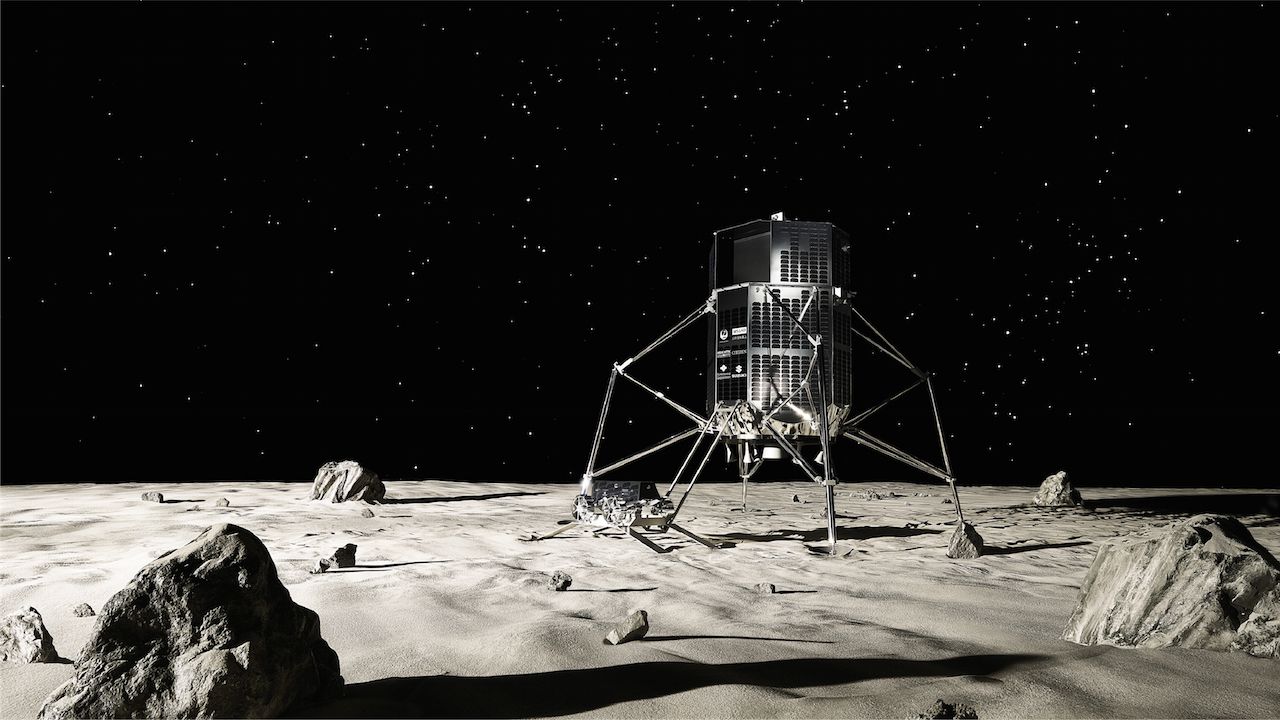
“Careful consideration of the target site criteria included continuous Sun-illumination duration and communication visibility from the Earth,” it was noted. “Alternate landing targets include Lacus Somniorum, Sinus Iridium and Oceanus Procellarum, among others. Landing is currently expected to take place around the end of April 2023.”
Ferrying Rashid down to the surface is Japan’s Hakuto-R lander, originally an ill-fated candidate for the Google Lunar X-Prize. The lander, whose fortunes were later revived (and “rebooted”, hence the “R”) by the Tokyo, Japan-headquartered robotic spacecraft technology firm ispace, Inc., will deliver a suite of payloads, including Rashid to the lunar surface.
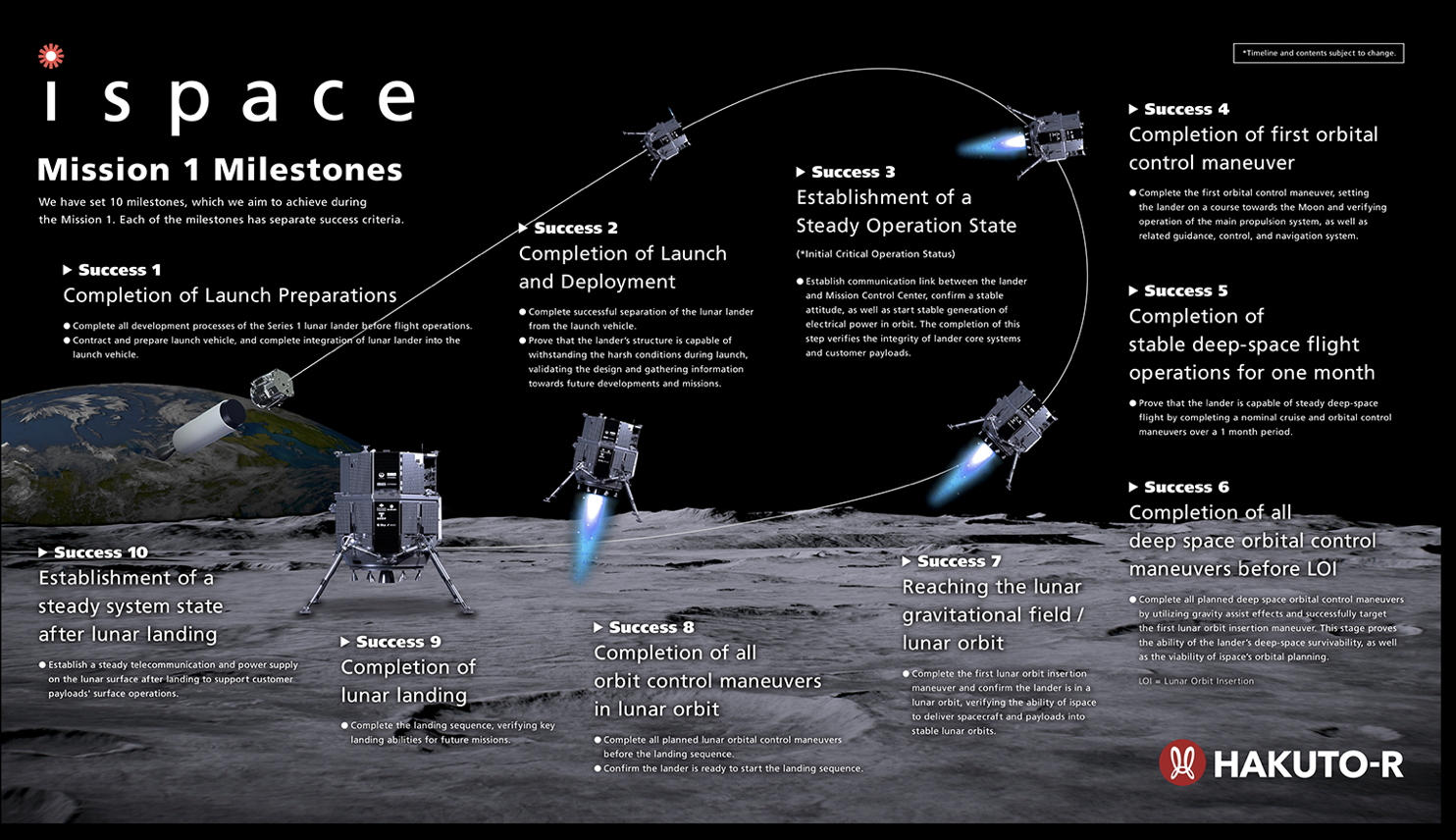
Back in September 2018, ispace contracted SpaceX for launch services, with an expectation that the first Hakuto-R mission would launch as soon as 2021, although schedules subsequently shifted to identify a No Earlier Than (NET) date of 2022. In the meantime, Hakuto-R moved briskly through its Critical Design Review (CDR) and construction of the lander got underway at the facilities of JAL Engineering Co., Ltd., in Narita, Japan.
In April 2021, the UAE’s Mohammed bin Rashid Space Centre (MBRSC) signed contracts with ispace to deliver its Rashid rover on the first Hakuto-R mission. Under the terms of the deal, the lander would also “provide wired communication and power during the cruise phase and engage in wireless communication on the lunar surface”.
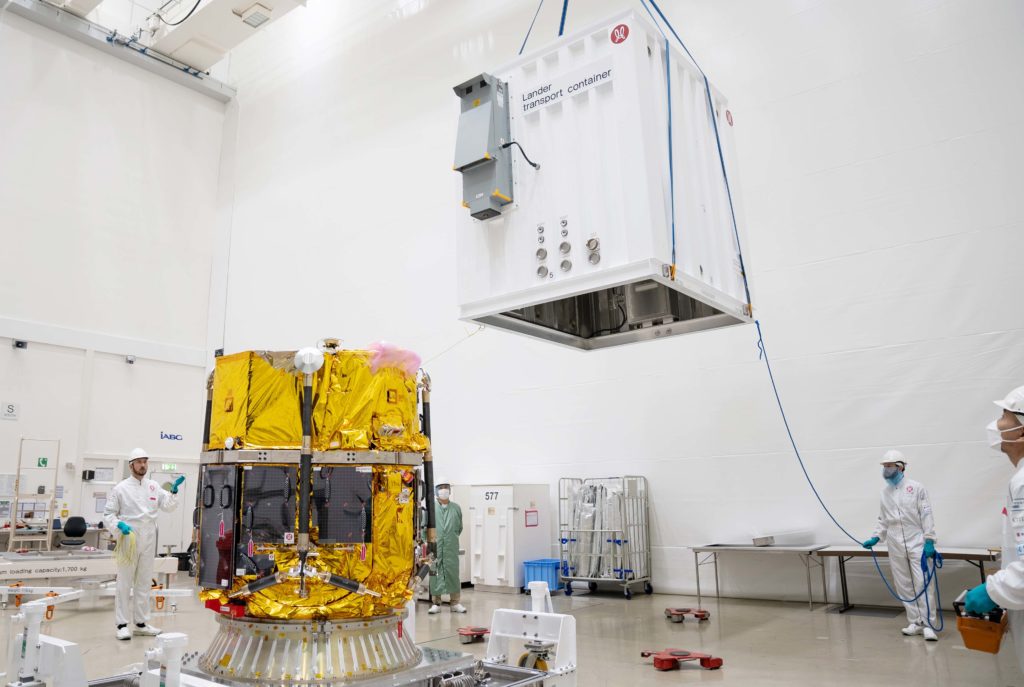
Final assembly of the Hakuto-R spacecraft began in the summer of 2021 and by mid-2022 Assembly, Integration and Testing (AIT) activities was wrapping up at ArianeGroup GmbH’s facilities in Lampoldhausen, Germany. By this point, launch was targeted during a week-long “window”, extending from 9-15 November, although by the time the spacecraft arrived in Florida on Halloween that date had slipped to NET 22 November.
The revised timeline, ispace noted, “allows for best preparation for the mission when considering the fuel-loading schedule for the lander and launch date availability”. But by mid-November, that date had slipped again to NET 28 November, then again to the 30th, in response to unfavorable weather at the Cape, and finally to NET 1 December, as SpaceX sought to conduct unspecified checks of the Falcon 9 launch vehicle.
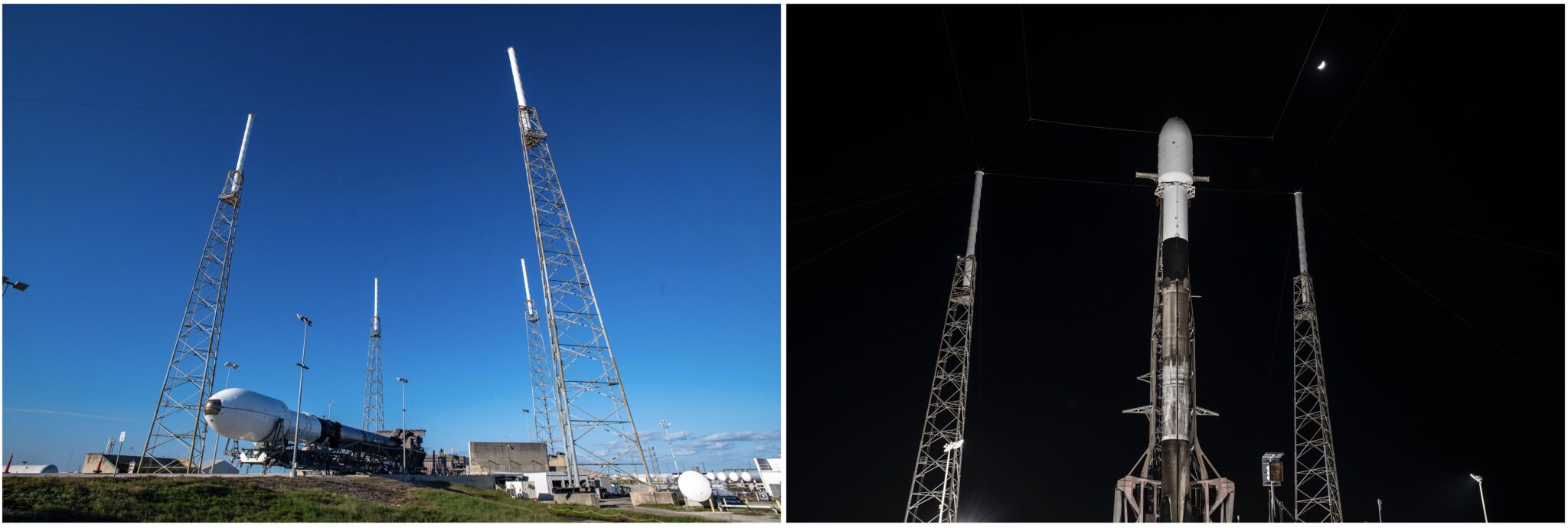
After more than a week of official silence, on 7 December SpaceX tweeted that its teams had “completed additional vehicle inspections and reviews” and noted that both “rocket and payload are looking good” for a new launch attempt at 2:38 a.m. EST Sunday, 11 December. This near-two-week delay was prompted in part by a lunar trajectory blackout period—spanning 3-6 December—during which time it was considered more difficult for the mission to navigate to its intended orbit.
In the meantime, ispace explained that it plans “no major operational changes” to the mission, so long as the launch is completed before the middle of December. This would still provide the proper trajectory and flight conditions for a lunar landing by the end of April 2023 and would preserve the Atlas crater as the primary touchdown point.
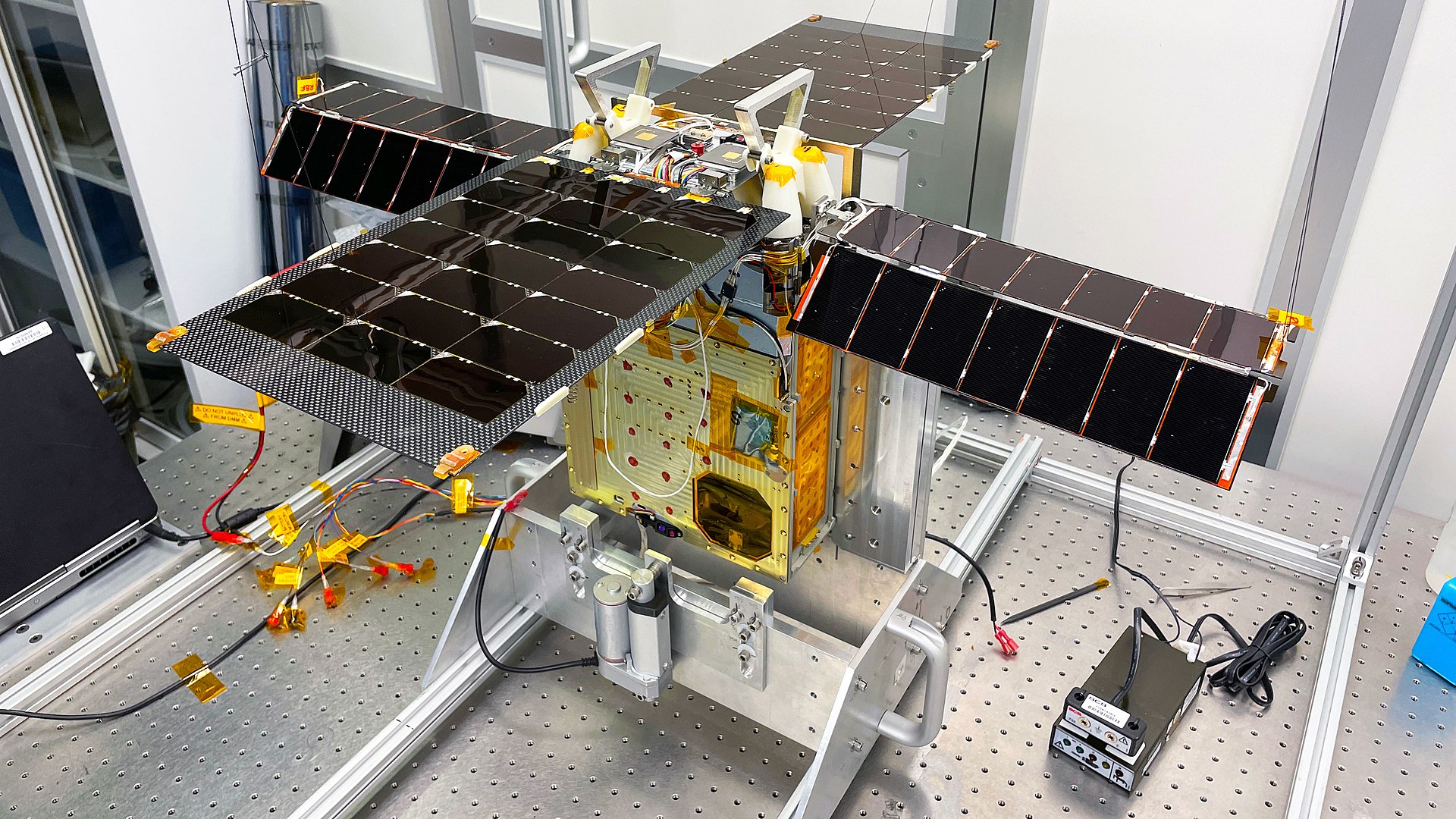
In addition to the Rashid rover, the Hakuto-R lander also includes multiple rideshare payloads devoted to lunar surface science. The Japan Aerospace Exploration Agency (JAXA) has provided a small-scale, two-wheeled “transformable” rover, measuring some 3 inches (80 millimeters) in diameter, whilst an Artificial Intelligence (AI) flight computer aboard Hakuto-R will facilitate communications with Rashid. Other payloads included a solid-state battery test module, multiple cameras and panels engraved with the names of Hakuto-R’s crowdfunding supporters.
Also hitching a ride is NASA’s Lunar Flashlight, a 6U-class CubeSat intended to locate and estimate the size and composition of water-ice deposits from polar orbit around the Moon. The tiny CubeSat, which was originally earmarked to fly aboard Artemis I, but missed its integration “window”, weighs only about 30 pounds (14 kilograms), and is equipped with near-infrared lasers and an on-board spectrometer to gather data from an orbit which will carry it as close as 12 miles (20 kilometers) from the Lunar South Pole.




